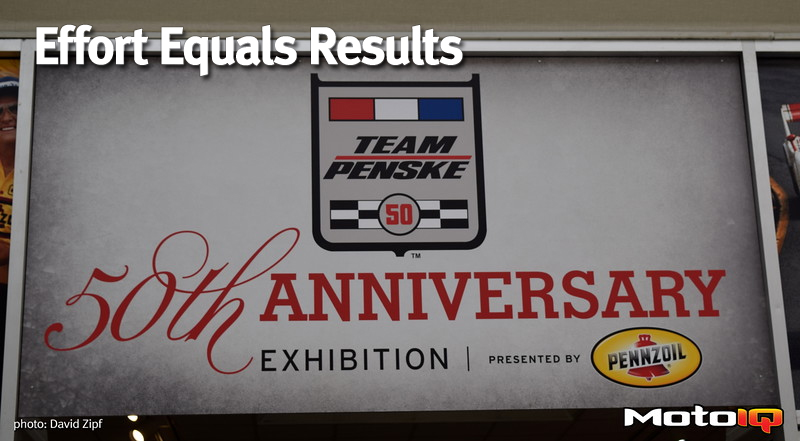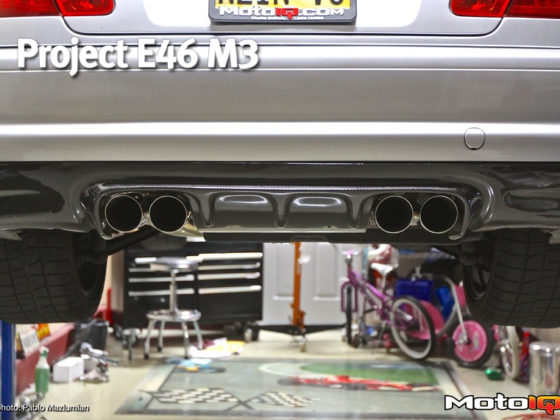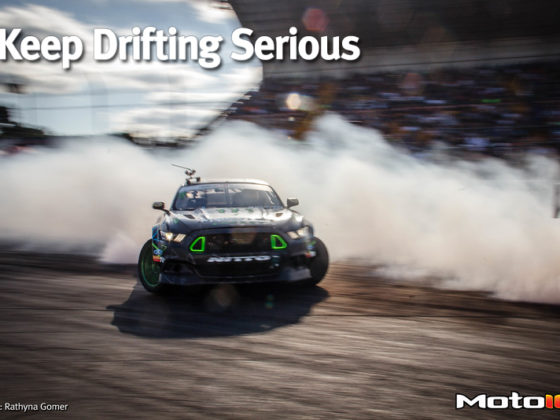,
 1994 would be Penske’s last dominating year for some time. The 1995 PC24 was nowhere near as good, even failing to qualify for Indy! In 1996, The Split occurred and Roger would not return to Indy for half half a decade. From hero to zero in one short year. To add insult to injury, in CART Penske’s PC designed cars failed to win, a mix of driver issues, driver deaths, tire issues, poor chassis design and Ilmor’s shifting focus on Formula 1. In 2001, Penske Racing decided to take a stab at the Indy 500 once more. Helio Castroneves won the race in his rookie year in this Dallara IR2, powered by a 4.0L naturally aspirated Oldsmobile engine that seems so pathetic next to the Beast. The IRL cars were much less aero dependent than the old CART cars, so despite having 400 or so less horsepower, the IR2 was only 5 MPH slower than the PC23. Helio and Roger went on to win the 2002 running of the 500. Gil DeFerran won for Penske in 2003 (Helio finished 2nd and almost became the only man to win three 500s in a row). There were other IRL-era winning cars on display but, if we're honest, they're not that interesting compared to the older IndyCars…and of course some of the other cars in Penske's collection.
1994 would be Penske’s last dominating year for some time. The 1995 PC24 was nowhere near as good, even failing to qualify for Indy! In 1996, The Split occurred and Roger would not return to Indy for half half a decade. From hero to zero in one short year. To add insult to injury, in CART Penske’s PC designed cars failed to win, a mix of driver issues, driver deaths, tire issues, poor chassis design and Ilmor’s shifting focus on Formula 1. In 2001, Penske Racing decided to take a stab at the Indy 500 once more. Helio Castroneves won the race in his rookie year in this Dallara IR2, powered by a 4.0L naturally aspirated Oldsmobile engine that seems so pathetic next to the Beast. The IRL cars were much less aero dependent than the old CART cars, so despite having 400 or so less horsepower, the IR2 was only 5 MPH slower than the PC23. Helio and Roger went on to win the 2002 running of the 500. Gil DeFerran won for Penske in 2003 (Helio finished 2nd and almost became the only man to win three 500s in a row). There were other IRL-era winning cars on display but, if we're honest, they're not that interesting compared to the older IndyCars…and of course some of the other cars in Penske's collection. As impressive as Penske’s IndyCar stats are, Penske Racing is about much more than just IndyCar. In 1967, Penske competed in Trans Am, first with this Camaro, and then an AMC Javelin AMX. The Camaro was particularly infamous and the source of the phrase “Unfair advantage,” coined by Mark Donohue. Penske took the Camaro shell and had it acid dipped, shedding a few hundred pounds of excess weight. While technically not against the rules, it broke them in spirit (Trans Am cars were supposed to be very close to their road going counterparts which were decidedly NOT acid dipped).
As impressive as Penske’s IndyCar stats are, Penske Racing is about much more than just IndyCar. In 1967, Penske competed in Trans Am, first with this Camaro, and then an AMC Javelin AMX. The Camaro was particularly infamous and the source of the phrase “Unfair advantage,” coined by Mark Donohue. Penske took the Camaro shell and had it acid dipped, shedding a few hundred pounds of excess weight. While technically not against the rules, it broke them in spirit (Trans Am cars were supposed to be very close to their road going counterparts which were decidedly NOT acid dipped).  Penske and Donohue would win the TA championship in 1968 and 69 in the Camaro, and then in 1971, ‘72, and ‘76 with the AMC. The Javelins had aerodynamic modifications (like a large spoiler and splitter) requested by Donohue, who was a mechanical engineer before he became a race car driver. In 1969, the TA rules kept the cars incredibly close to stock: notice how the Camaro still has its original door panels and hardware. The cage is fairly minimalistic too, as was usual in the 60s. To meet minimum weight after the acid dipping, Penske added ballast to the floors of the cars, lowering the CG of the chassis.
Penske and Donohue would win the TA championship in 1968 and 69 in the Camaro, and then in 1971, ‘72, and ‘76 with the AMC. The Javelins had aerodynamic modifications (like a large spoiler and splitter) requested by Donohue, who was a mechanical engineer before he became a race car driver. In 1969, the TA rules kept the cars incredibly close to stock: notice how the Camaro still has its original door panels and hardware. The cage is fairly minimalistic too, as was usual in the 60s. To meet minimum weight after the acid dipping, Penske added ballast to the floors of the cars, lowering the CG of the chassis. Also in Penske’s arsenal was the so called Can-Am Killer: The Porsche 917/10. Generally, I am not a Porsche fan, but these cars are so ludicrous, you can’t help but love them. This 917/10 was driven by George Folmer in 1972, winning 5 of the 8 Can-Am races of the year. Donohue was originally slated to drive this car, but was injured in pre-season testing. The 917 first won LeMans in 1970 and 71, but for 1972, rules were set to change that would require small, high revving 3.0L engines, a formula that both matched Formula 1, and did not interest Porsche. Instead, they brought the 917 to America, stretched the wheelbase, doubled the size of the engine, and turbocharged the hell out of it. By the end of the Can-Am days, nearly every car was a Porsche 917 variant, effectively killing the idea of a wide open, no-holds-barred series. However the continued Penske dominance shows Roger’s most important skill as a team leader: he requires nothing less than the best and every car with “Penske Racing” on the nose is prepared to the absolute highest standard. Even in series with identical cars, Penske’s cars are always that little bit faster and more reliable to get the team into Victory Lane.
Also in Penske’s arsenal was the so called Can-Am Killer: The Porsche 917/10. Generally, I am not a Porsche fan, but these cars are so ludicrous, you can’t help but love them. This 917/10 was driven by George Folmer in 1972, winning 5 of the 8 Can-Am races of the year. Donohue was originally slated to drive this car, but was injured in pre-season testing. The 917 first won LeMans in 1970 and 71, but for 1972, rules were set to change that would require small, high revving 3.0L engines, a formula that both matched Formula 1, and did not interest Porsche. Instead, they brought the 917 to America, stretched the wheelbase, doubled the size of the engine, and turbocharged the hell out of it. By the end of the Can-Am days, nearly every car was a Porsche 917 variant, effectively killing the idea of a wide open, no-holds-barred series. However the continued Penske dominance shows Roger’s most important skill as a team leader: he requires nothing less than the best and every car with “Penske Racing” on the nose is prepared to the absolute highest standard. Even in series with identical cars, Penske’s cars are always that little bit faster and more reliable to get the team into Victory Lane. 5 of 8 races is not 8 of 8 and in 1973, Porsche turned up the wick, not to 10, not to 11, but to 15…1500 horsepower that is! The 917/10 was given a total overhaul and turned into the 917/30, a car as insane as they come. Powered by a twin turbocharged, air cooled 5.4L flat-12 (basically a pair of 911 engines cast together, but in magnesium), at their peak the 917s made as much as 1,500 horsepower! The 917 could accelerate from 0-100 MPH in under 3 seconds, kicking the ass out of a Veyron…all in 1973! The 917 is actually a very small car, the wide and low body belies how small it actually is: it’s only about the length and height of an NA Miata. The scant 917s only weighed 1,700 lbs and with not a lot of aero, these were true monsters. Can-Am had a very wide open rulebook and all sorts of insane creations were brought to life in this series. This car was driven by Mark Donohue in 1973, winning 6 races in a row and eventually the championship. In 1975, Donohue set a 221.120 MPH closed course speed record at Talladega with this car, a record that would stand until Rick Mears reset it in 1986, also in a Penske prepared car (see the Al Unser Sr car a few pages back).
5 of 8 races is not 8 of 8 and in 1973, Porsche turned up the wick, not to 10, not to 11, but to 15…1500 horsepower that is! The 917/10 was given a total overhaul and turned into the 917/30, a car as insane as they come. Powered by a twin turbocharged, air cooled 5.4L flat-12 (basically a pair of 911 engines cast together, but in magnesium), at their peak the 917s made as much as 1,500 horsepower! The 917 could accelerate from 0-100 MPH in under 3 seconds, kicking the ass out of a Veyron…all in 1973! The 917 is actually a very small car, the wide and low body belies how small it actually is: it’s only about the length and height of an NA Miata. The scant 917s only weighed 1,700 lbs and with not a lot of aero, these were true monsters. Can-Am had a very wide open rulebook and all sorts of insane creations were brought to life in this series. This car was driven by Mark Donohue in 1973, winning 6 races in a row and eventually the championship. In 1975, Donohue set a 221.120 MPH closed course speed record at Talladega with this car, a record that would stand until Rick Mears reset it in 1986, also in a Penske prepared car (see the Al Unser Sr car a few pages back).


